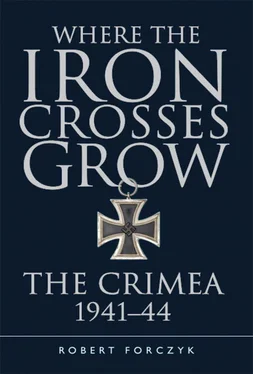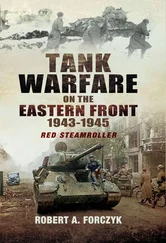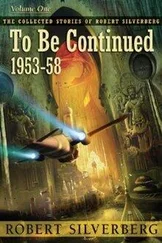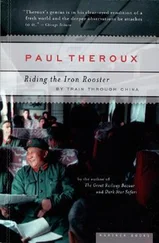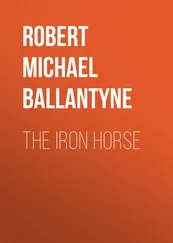When World War I erupted in August 1914, the Black Sea Fleet had a clear superiority over the Ottoman Navy, with nine pre-dreadnought battleships versus only two pre-dreadnoughts Turkey acquired from Germany. However, the German decision to transfer the modern battlecruiser Goeben to Turkish service eliminated the Russian naval advantage. Adding insult to injury, the Goeben (renamed Yavuz ) boldly bombarded Sevastopol in October 1914, demonstrating the inability of the Black Sea Fleet to even protect its main naval base. It was not until the two Imperatritsa Mariya -class dreadnoughts entered service a year later that the Black Sea Fleet gained some measure of superiority. However, the lead dreadnought, the Imperatritsa Mariya , suffered a magazine explosion and capsized in Sevastopol harbor in October 1916. Given the scale of the Tsarist investment of resources in the Black Sea Fleet and the naval base at Sevastopol, the return for the Russian war effort was minimal. When the Tsar was overthrown by the February Revolution in March 1917, the sailors of the Black Sea Fleet were quickly radicalized and were hostile to the Provisional Government. Sailor committees demonstrated their revolutionary fervor by renaming the two new dreadnoughts in Sevastopol: the Imperatritsa Ekaterina Velikaya became the Svobodnya Rossiya ( Free Russia ) and the Imperator Aleksandr III became the Volya ( Freedom ) .
Russian authority all but collapsed in the Crimea after the October Revolution, and local Tatars, although reduced to less than 20 percent of the population, saw in this chaos their chance to recover their independence. Noman Çelebicihan, a 33-year-old Tatar lawyer, proclaimed himself president of the Crimean People’s Republic on December 13, 1917. Using a few hundred ethnic Tatar troops demobilized from the Russian Army and some pro-White officers, Çelebicihan established a provisional government in Bakhchisaray. However, the Bolshevik leadership in St Petersburg had dispatched Vasily V. Romenets and Aleksei V. Mokrousov, both former sailors, to whip up revolutionary fervor in the Black Sea Fleet, and their mission was a complete success. On December 16, sailors from the destroyers Fidonosi and Gadzhibey raised the Red Flag and anarchy spread rapidly across the fleet. While Romenets established a Revolutionary Committee (RevKom) in the fleet, Mokrousov organized 2,500 anarchist sailors into the Black Sea Fleet Revolutionary Force and seized the port of Sevastopol in the name of the Bolsheviks. After receiving telegrammed instructions from the Bolshevik Central Committee in St Petersburg to “act with determination against the enemies of the people,” Mokrousov’s sailors arrested and executed 128 officers on December 28. Naturally, the Black Sea Fleet Revolutionary Committee refused to recognize Çelebicihan’s provisional government and on January 14, 1918 Mokrousov sent a large detachment of his Red Guard sailors northward to Simferopol, where they arrested and executed Çelebicihan. They also murdered about 200 of his supporters, bayoneting and clubbing them to death in the Simferopol train station. Thereafter, the Bolsheviks found it increasingly difficult to control the armed groups of sailors, who favored drunken anarchy over socialist rhetoric. In a three-day orgy of violence, which now extended to families of officers and other members of the bourgeoisie, Mokrousov’s gangs of armed sailors murdered between 600 and 700 people in Sevastopol during February 21–23, 1918. [10] Apollon G. Zarubin, Bez Pobeditelei: Iz Istorii Grazhdanskoi Voiny v Krymu [ Without Winners: From the History of the Civil War in the Crimea ] (Simferopol: Antiqua, 2008).
Economic activity in the Crimea virtually collapsed as sailors turned to brigandage and hostage taking.
Recognizing that the revolutionary sailors were out of control, Anton I. Slutsky, a professional Bolshevik revolutionary, was sent from St Petersburg to take charge of the Crimea, and his first order of business upon arrival was to institute a Red Terror to crush the rising tide of Tatar nationalism. Slutsky then established a ramshackle government in Simferopol and took charge of the 3rd Soviet Army, which numbered fewer than 5,000 soldiers and sailors. Yet the Bolsheviks had little effective control over the Crimea, and as Professor Peter Kenez described: “The Bolshevik regime [in the Crimea], which lasted for three months, was remarkable only for its senseless cruelty. No one could control the looting and sadism of the sailors.” [11] Peter Kenez, Civil War in South Russia, 1919–1920: the Defeat of the Whites (Berkeley, CA: University of California Press, 1977), p. 192.
There was one force that could control the anarchy-loving Black Sea Fleet sailors. Most of the Russian Army was demobilized after the Germans agreed to a temporary armistice in December 1917, but when the Bolsheviks withdrew from peace talks at Brest-Litovsk on February 10, 1918, the Germans were quick to take advantage of Russia’s helplessness. Dubbed Operation Faustschlag ( Fist Punch ), the Germans advanced into Ukraine virtually unopposed on February 18, 1918 and soon reached Kiev. With German encouragement, Ukrainian nationalists formed an independent government and the Army of the Ukrainian People’s Republic (UPR). Although the Bolsheviks quickly returned to the negotiating table at Brest-Litovsk, the Germans forced them into signing away their rights to Ukraine and the Crimea, as well as the Black Sea Fleet. On March 30, 1918, the German government announced that it did not regard the Crimea as part of Ukraine. Privately, a number of senior German military leaders such as Erich Ludendorff wanted to acquire the Crimea as a permanent German colony in the east. However, Ukraine also wanted to seize control of the Crimea and the Black Sea Fleet.
In April 1918, the UPR dispatched General Peter F. Bolbochan, a former Tsarist officer, with the the 1st Division from the Zaporozhye Corps to seize the Crimea. The UPR had quickly begun to form an army from prisoners returning from Austrian captivity, and Bolbochan’s division comprised three small infantry regiments. A small German expeditionary force, initially consisting of General Robert von Kosch’s 15. Landwehr-Division and a Bavarian cavalry division, followed Bolbochan’s division and tentatively cooperated with the UPR in disarming Russian troops in the area. Slutsky rushed what troops he had to the Perekop, but Bolbochan conducted an end-run at the Chongar crossing, which was seized on April 22, 1918. Once they realized that they were flanked, the Red forces disintegrated in panicked flight, allowing Kosch’s German troops to easily pass through the Perekop Isthmus. Local Tatars were eager to join with Bolbochan’s division, and when his troops reached Simferopol on April 24 and captured Slutsky, Crimean Tatars avenged the Bolshevik murder of Çelebicihan by executing Slutsky. Two days later, the Germans arrived at Simferopol, but now German–Ukrainian military cooperation came to an abrupt end. Kosch ordered his troops to surround and disarm Bolbochan’s division and the UPR was ordered to leave the Crimea, which he pointed out belonged to Germany now. Lenin was furious that the Germans were occupying the Crimea but his protests were ignored. [12] Vladimir I. Lenin, Protest to the German Government Against the Occupation of the Crimea, May 11, 1918 , Collected Works, 4th English Edition, Volume 27 (Moscow: Progress Publishers, 1972), pp. 358–359.
Control of the Black Sea Fleet now became a primary objective of the Germans, Ukrainians and Bolsheviks. Rear-Admiral Mikhail P. Sablin had saved himself from mob violence in January by openly joining the Bolsheviks – as other former Tsarist officers did as well – and Slutsky had put him in charge of the fleet. Now with German and Ukrainian forces approaching Sevastopol, Sablin was ordered to take the fleet to Novorossiysk, but he was only able to convince the crews of the dreadnoughts Svobodnya Rossiya and Volya , plus 11 destroyers, to follow him. The rest of the fleet, including the seven pre-dreadnoughts and another nine destroyers, fell into German hands when Kosch’s troops seized the city on May 1, 1918. [13] The German forces in the Crimea in 1918 included the Bavarian Cavalry Division, 15. Landwehr-Division and the 217. Infanterie-Division.
German forces overran the rest of the Crimea forthwith, including the Kerch Peninsula. Alarmed that the Germans might continue eastward to seize the remainder of the Black Sea Fleet at Novorossiysk, Lenin personally ordered Sablin to scuttle his fleet on June 18, 1918. The dreadnought Svobodnya Rossiya and five destroyers were scuttled, but the crews of the Volya and nine other destroyers refused and opted to return to Sevastopol. A large proportion of the crews of the Black Sea Fleet were Ukrainian and they hoped that the Germans would support the creation of an independent Ukrainian navy. [14] Stephen McLaughlin, Russian and Soviet Battleships (Annapolis, MD: Naval Institute Press, 2003), p. 308.
Читать дальше
